How To Design A Nice Garden With Ugly Fence
You are here: Home / Homestead Living / 16 Cheap Fence Ideas For The Suburbs And The Country
When buying a new property — whether in the city, suburbs, or country — you may also inherit broken-down, ugly, or absent fences. With a small patch of land, this may lead to privacy concerns. On a larger acreage homestead, bad or nonexistent fencing can lead to problems like your sheep escaping and eating the neighbor's garden, or a stray dog trespassing and taking out your chicken flock.
Though fences may seem to bar interaction at first, they're actually important to establish good boundaries for your animals, children, or neighbor's dogs, and they can beautify your property as a bonus.
If you're reading this article, you're probably looking for a way to keep something unwanted off your property or something wanted on your property, and you're looking for a way to do it without breaking the bank. Thankfully, there are cheap fence options available to you.
It seems there are really two options for fencing. Basically, fences cost you either money or time. You can get one done fast and pay a lot for it, or you can do it yourself at a slower pace and have it cheap — but don't let the term "cheap" make you call a fencing company with a resigned sigh.
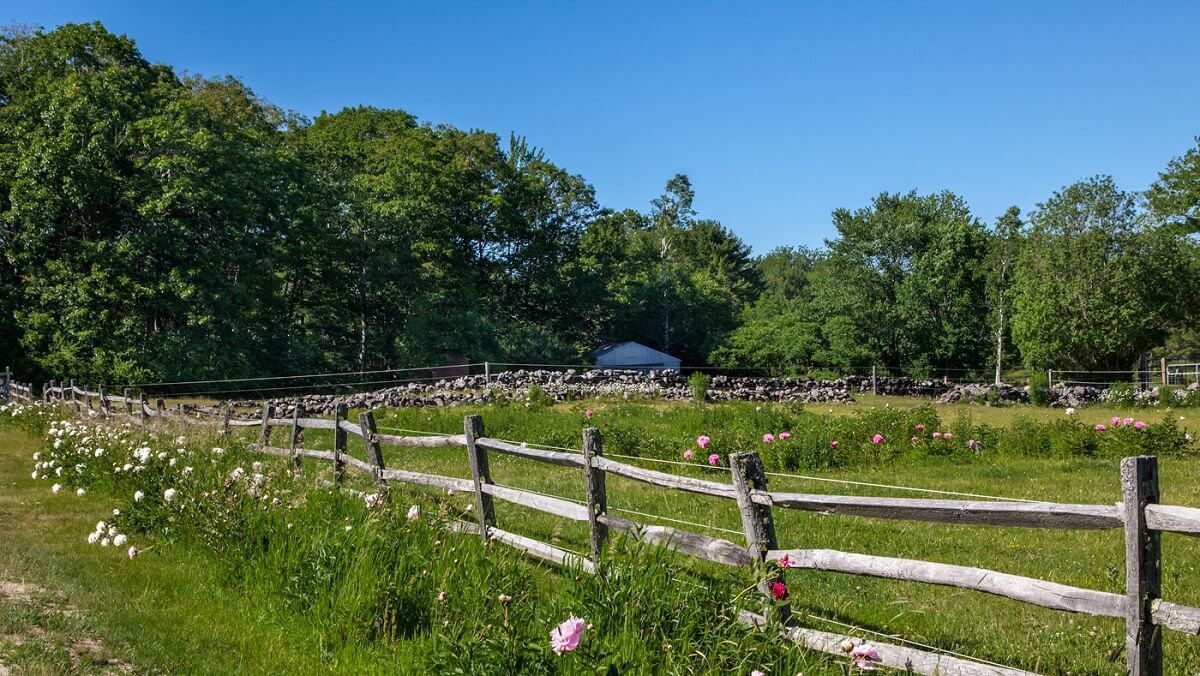
Going for a cheap option does not mean you have to sacrifice on quality or aesthetics. After all, the original homesteaders were able to make fences with what they had on hand — and some of those fences are still standing. You too can build (or grow!) secure, dependable, and beautiful fences without emptying your savings account.
Before I get into the list, I have to mention an important note. If you are rebuilding a fence, it sounds easy enough to know where an agreed-upon boundary line is based on the location of a broken-down fence. Building a fence from scratch, however, can get you into neighborly squabbles if you're not mutually confident of the dividing line.
Related Post: 5 Goat Fencing Options & Details To Consider
Whether you are installing a new fence or rebuilding an old one, I would highly recommend having a surveyor come out and confirm your land's true legal boundaries. That way you know exactly where to build, and if any border disputes arise, you will be prepared.
Hopefully, this list of options gives you some food for thought as you figure out how to make your homestead or backyard a little more private and safe. Bear in mind, this is not a how-to for every design, but a set of launching points and a collection of resources for you to use as you decide what is best for your property.
Option #1: Build A Fence
If you are ready to flex some DIY ingenuity and you're not worried about breaking a sweat, you can build a fence very cheaply indeed. I hesitate to say that any of the materials used in the construction of these fences are free. While they may not cost any money, they will cost you considerable effort.
For some of us, the challenge and reward of a hard day's work is vitalizing and exciting, and exactly why we homestead. But after a full season of hauling rocks, splitting timbers, or pounding stakes, you will know for certain that the cost of a fence build is far beyond dollars and cents.
1. Post And Rail Fence

These are probably the rustic fences you most envision when you hear the word fence: a sturdy, wooden structure, solidly placed in the earth, winding around a herd of cattle or horses. If you have access to timber on your land (or a willing friend's land) and some simple hand tools, the cost of this fence is relatively low.
The effort, however, is high. Post and rail can be done with wood entirely in the round, but if you take the extra time to split timbers, you can make this fence even more economical as a split rail fence.
The goal is to get enough 3 to 4-inch diameter sections to suit your needs — whether it is for a small paddock or a property-surrounding structure. If you opt for split rail, you can use timber of greater diameter. You just need to spend some quality time with a maul and wedges to split it all. The cheapest option is to fell and process the trees yourself but obviously, this can only be safely attempted if you have experience.
https://www.instagram.com/p/B35JqIKgwfd/
The best time for felling trees and splitting timbers is in the winter or early spring when green wood splits most easily. As you will inevitably discover, some trees are much easier to work with than others, and some have longer life expectancy. Prime fence post materials can be made from rot-resistant Osage orange and black locust trees as they have at least a 25-year life expectancy without treatment.
In lieu of those woods, red cedar usually lasts at least 15 years untreated, and white oak will last at least 10 years. Even if you don't have optimal wood, you can increase your post's rot-resistance by charring the ends in a fire. Of all the woods, elm is a wood to avoid as it is very difficult to split.
Instructions on building this archetypal fence can be found in many resources. For a book version, check out Back to Basics for the simple, straightforward instructions. For online help, see the following links for step-by-step instructions.
- How to make the rails and posts
- How to install the fence
2. Stone Fence
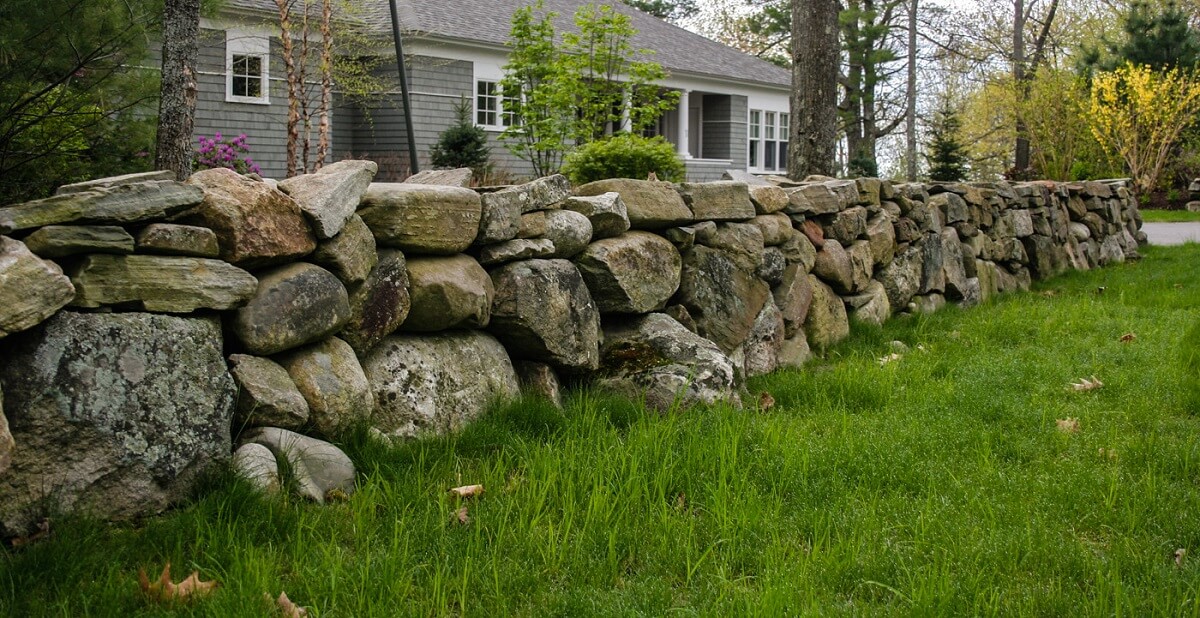
You may live on land that is covered with rocks and boulders. While this may definitely put a cramp in your gardening style, you can turn the curse into a blessing and make those rocks into a permanent and cheap fence.
Related Post: The Art Of The Dry Stack Stone Wall
For inspiration, you can read The Good Life by Scott and Helen Nearing. On their homesteads, stone became a choice building material because of its free availability, and they detail their building process thoroughly.
Another good resource can be found in Country Wisdom & Know-How. A mortarless wall (where the stones are held in place by friction and gravity) will be the cheapest, but in that case, you'd be best served by using sandstone or limestone. Here's a link with good information to add to your resources.
If you like the idea of a stone fence but don't have enough stones on your land, you can probably find someone with a lot of land who would like to be relieved of stones littering their fields. An advertisement with your local Craigslist may help you find materials for the cost of moving them yourself.
3. Zig-Zag Fence
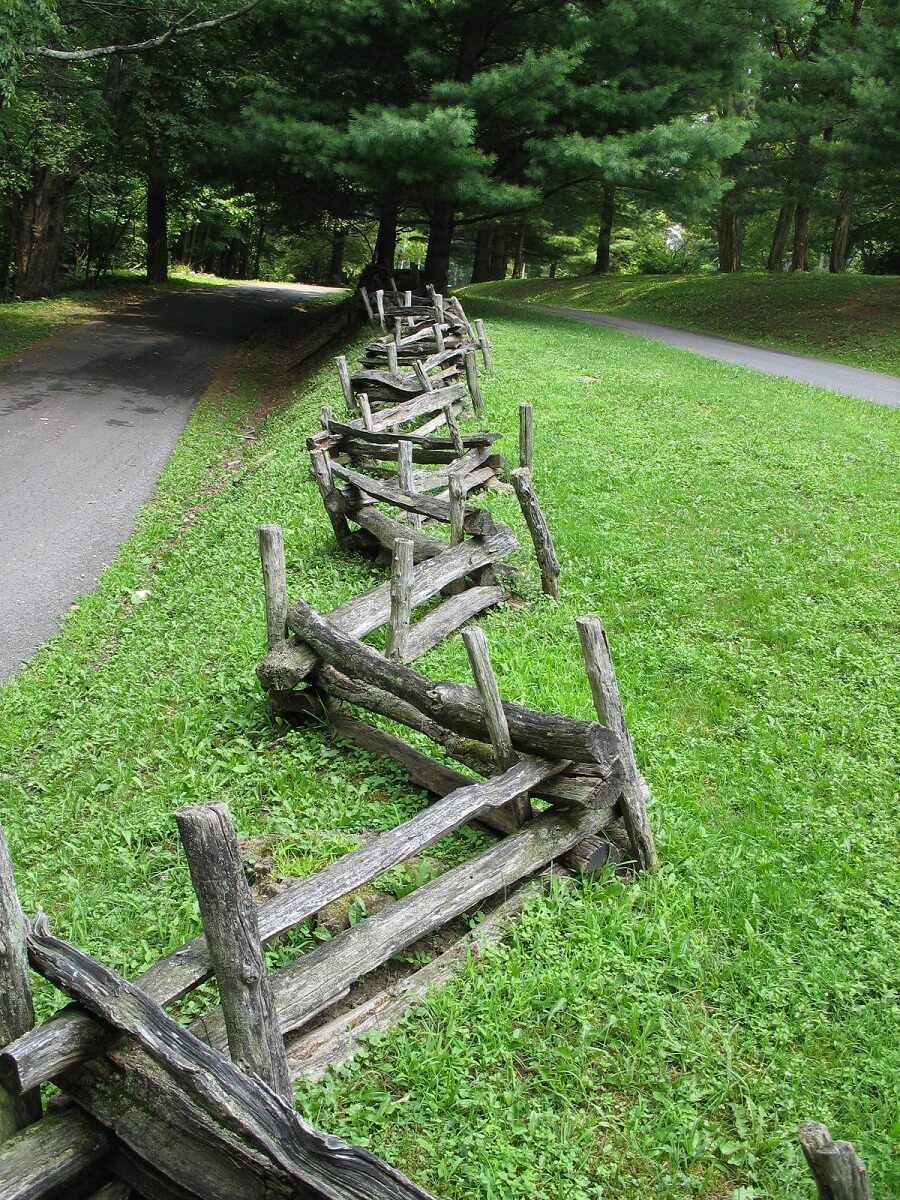
As with the post and rail fence, this design is only cheap if you have a huge source of lumber from your own land. Thankfully, if you have a woodlot, you couldn't have a simpler or cheaper build than this old-fashioned style.
Sometimes called a snake fence, Virginia rail fence, or worm fence, this style is both decorative and functional for retaining children and small animals. You can combine this fence with boulders piled around the base to maximize its strength like New England homesteaders did in the past.
The nice thing about this style of fence is though it consumes a lot of wood, it only requires split rails. No nails. No posts. No additional hardware. Simply stack split timbers (usually cedar) in the zig-zag shape that is self-supporting. Easy to install, and easy to move, if ever need be. This YouTube video shows you the process.
4. Twig Fence
If you're looking for an adorably rustic look and need a fence more for psychological rather than physical boundaries, why not build a twig fence? Fashioned out of pruned or freshly fallen branches, the materials are as free as can be after a good windstorm. Or, if you have a tree fall someplace close, you can make the best of a bad situation and gather more twigs than you'll know what to do with! Check out the beautiful results at this website.
5. Wattle Fence
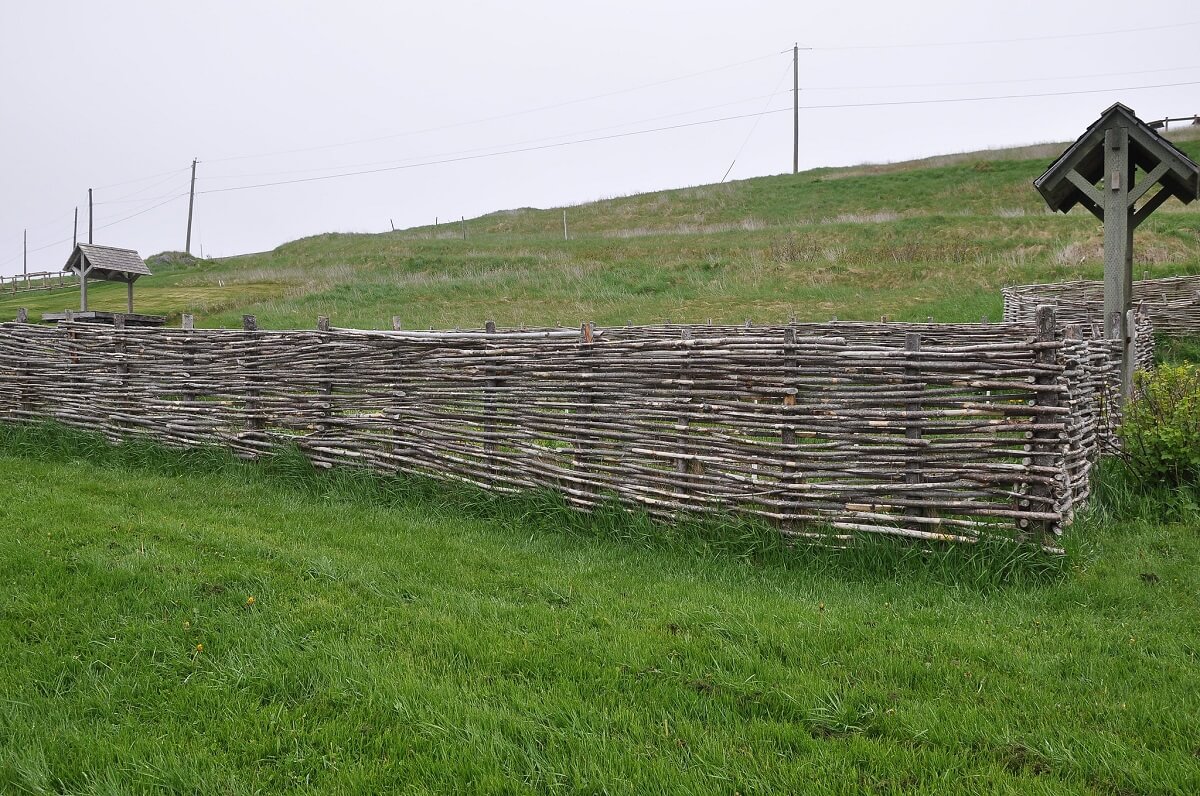
Though wattle fencing is an acquired skill, you can't deny the beauty of this woven masterpiece. Wattle has its roots in ancient Europe where the woven panels, combined with a thick layer of daub, were utilized as long-lasting walls for dwellings. Without the trademark earthen coating, wattle panels make ideal fences for smaller livestock, gardens, and backyards.
Related Post: Wattle Fence
There may have a bit of a learning curve until you like the results, but some simple tools and a large supply of saplings or coppiced wood will give you the materials needed to construct this fence. It would be beautiful as both livestock fencing or a nature-vibe backyard setting. Here's a detailed set of instructions.
6. Pallet Fence
So you don't have your own woodlot and just want to build a cheap fence to give your backyard some privacy? Pallets fit that bill. These staple materials of the DIY culture are excellent for creating a quick and cheap fence that can be surprisingly beautiful.
While you are constrained to the pallets' dimensions at the outset, you can do an amazing variety of designs with these adult building blocks. Check out the following designs for some thrifty inspiration.
$32 Pallet Fence
Here's a simple, $32 fence made of pallets that would be perfect for containing dogs.
DIY Pallet Top Garden Fence
I love this garden-topped pallet fence idea — beautiful and edible!
Trellis Pallet Fence
There is nothing ugly about this pallet fence when trained, climbing roses decorate it like a Victorian secret garden.
Herringbone Pallet Fence
Though it's certainly a more intensive project, there's no denying the rustic refinery of this decorative pallet fence.
7. Root Fence
This fencing solution is certainly not one for a suburban neighborhood with an HOA, so consider yourselves warned. However, if you want a unique fencing idea from the homesteading past and have a lot of recently logged land, there is a use for all those abandoned stumps.
In the spring, after the frost heave of winter has loosened the soil, stumps can be ripped from the ground and pushed into a fence formation (with root ends facing in and the cut ends facing out). It makes what some may call an ugly, but a surprisingly long-lasting fence. Some old Canadian homesteads still have root fences over a century old. I first found mention of these in Eric Sloane's Diary of an Early American Boy.
8. Recycled Door Fence
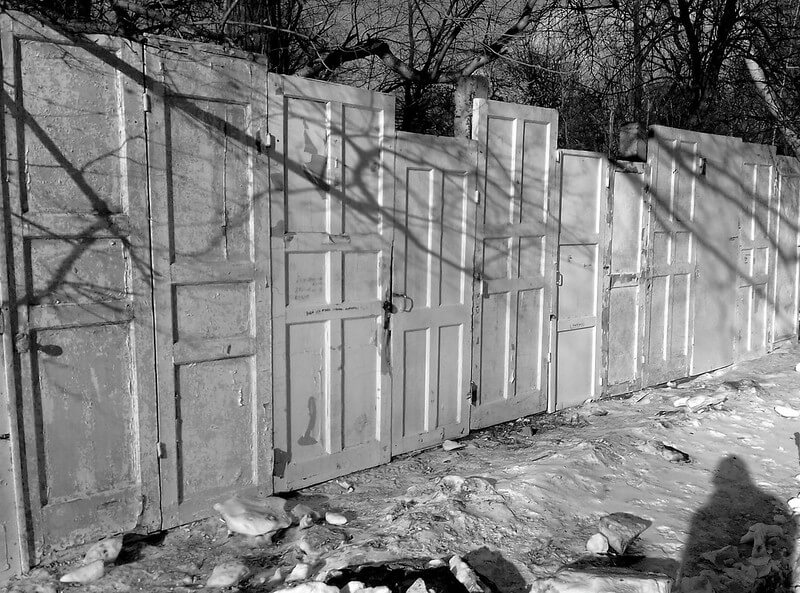
If you're into upcycling and have recently come across a set of old doors, they can become a quirky and interesting fence in their own right. Oriented horizontally, the decorative elements of old closet doors, french doors, or louvered hallway doors, add beauty and interest wherever they are placed.
9. Tire Wall
Rammed earth tires are the foundation of the Earthship design, and the materials are as cheap as it gets. Dirt can come directly from your land, and many used-tire businesses are happily willing to part with old tires for free if you're willing to take the time to chat with a manager.
Calling a rammed tire wall a fence may be a stretch, but if you're looking for a permanent boundary solution and want to redeem some tires from a landfill in the process, here's the answer for you. The method is basic. Place tire, fill the tire with dirt, pound dirt with a sledgehammer, add more dirt, continue until solid, and repeat around 300 times or so.
Related Post: Building with Tires for Energy Efficiency and Disaster Resistance
But the results, once finished with a layer of adobe (also made from your land's dirt) can be absolutely sublime. For a fully detailed explanation of rammed earth tires, you can read the Earthship series by Michael Reynolds or visit this website for online instructions.
Option #2: Plant A Fence
Planting a fence is a solution that can take a really, really long time. But when it comes to durability and security, there's little that can trump a well-built, well-maintained hedge. Unlike a built fence, which inevitably starts to wear and break down, a maintained living fence only continues growing thicker and stronger with the passing years. The plants actively help you fortify your fences, and lead to a literally beautiful partnership.
The following plants all exhibit different features that may suit your designs for your backyard or back 40. From beautiful, flowering hedges that offer a backyard boundary marker to thick hedges that can contain any animal, these plants are some of the many ideal candidates for making a cheap, effective fence. Not convinced? Check out this article for general information on living fences, then dream through the following plant options.
Related Post: Live Fencing: What Is It and How to Implement It
10. Bamboo Fence
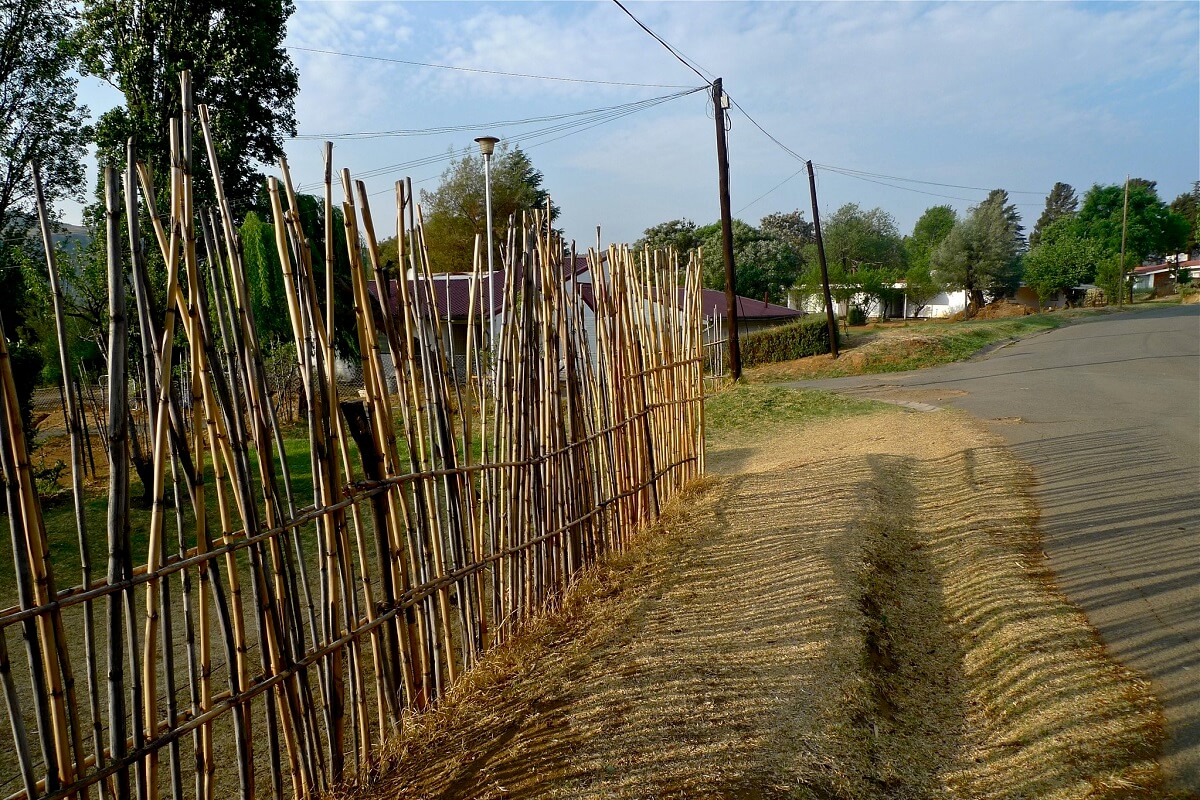
Renowned for its quick-growing habit, this perennial grass — because yes, it's actually a grass — can make a dense and attractive privacy screen between you and some neighbors. You'll have to decide between clumping bamboo and running bamboo and manage accordingly.
Related Post: How To Grow Bamboo
Though a manicured fence can be absolutely poetic and private, these plants will take over if given free reign. If you're willing to work on the fence at first, you can buy fewer plants and propagate your own from the bamboo runners.
11. Blackberries And Bramble Fence
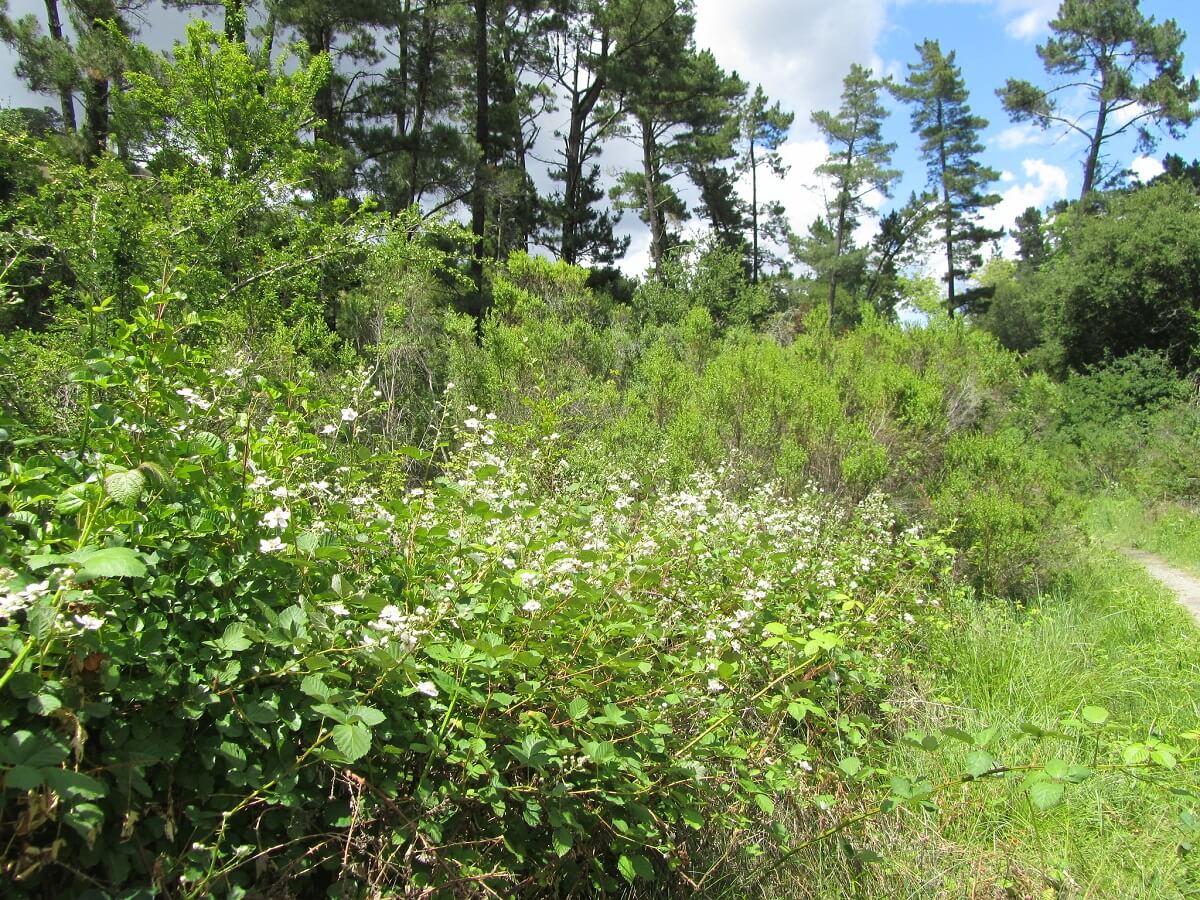
Need a quick, impenetrable boundary that is low on aesthetics but high on utility? Perhaps blackberry is the plant for you. Anyone who has gone foraging for bramble berries probably bears the scars of the encounter. Blackberries are loath to give up their fruit without drawing some blood with their fierce thorns.
Those thorns can double as a home defense if you choose to plant blackberry canes in a quick-growing hedge. You'll need to use a brush mower frequently to keep the encroaching bushes at bay (they spread persistently). Within two or three years, depending on how thickly they were planted, you'll have a cheap, prickly boundary that clearly declares "go a different way."
As a bonus, you'll have beautiful blossoms in the spring, edible leaves to brew into a tasty and medicinal tea, and of course, every kid should know the joy of stuffing fresh berries in their face.
Related Post: Live Fencing: What Is It and How to Implement It
12. Living Willow Fence
For a living fence that isn't quite as work-intensive as a hedge but is still a lovely option for a backyard, consider weaving a living willow fence. Take advantage of willow's natural tendency to sprout from cuttings, and create a picturesque boundary that is as valuable for its beauty as it is for its function.
Related Post: Living Willow Hedges
If you already have a willow tree on your property or know someone who is willing to share, the materials are totally free. Take note, however. This living fence works best in areas with plenty of moisture as willow is a water-loving plant. Here are some instructions.
13. Multi-Plant Hedge

The ancient art of hedge laying goes back centuries. The basic premise is to find a thick-growing species of shrub or tree, grow a line of them along the desired boundary, and carefully prune and weave them into a fence shape.
Over time, the trees will continue to grow. Guided by a careful hedgelayer, the branches will eventually form a formidable, impenetrable, and incredibly long-lasting fence. I first saw the ins-and-outs of this process in the fantastic documentaries Tales from the Green Valley and Edwardian Farm.
Hedges don't have to be constrained to one species of plant, either. In many cases, multiple plants are used in concert to provide a fabulously multiuse structure. Combine holly, hazel, ivy, and bramble, for example, and enjoy the following blessings.
- Wild animal habitat? Check.
- Source of browse for livestock? Check.
- Source of firewood? Check.
- Source of human food? Check.
- And, of course, fence that fulfills all the duties of a true, strong fence: Hog-tight, Horse-high, and Bull-Strong? Check, check, check!
In Great Britain, hedges have a longstanding tradition, and some have survived centuries to be actively used today. Not all traditional European hedge plants grow in our varied American climates. The next three native to America trees, however, have been used with great success.
14. Osage Orange Hedge
The Osage tree grows dense, strong wood, and the branches bear sharp thorns. The trimmed wood from hedge maintenance has the highest BTU value of any wood, so your living fence can double as a long-lasting source of prime firewood as well.
And if you're interested in archery, you can find no better material for handcrafted bows. This tree was also referred to as "bois d'arc" which is French for "tree of the bow." Bows crafted from Osage wood were historically prized above all others.
Related Post: Osage Orange Trees: Durable Hardwood With Alien-Like Fruit
You can buy Osage orange saplings to shave some years off of the process, but if you want a hedge as cheap as possible, take a late-fall drive and collect the bright-green fruit of this bizarre plant yourself. A winter of fermenting in water-filled buckets will yield a pulpy slurry that is jam-packed with seeds for spring planting. Just be sure to collect from as many different trees as you can to ensure there are viable seeds in your batch.
15. Black Locust Hedge
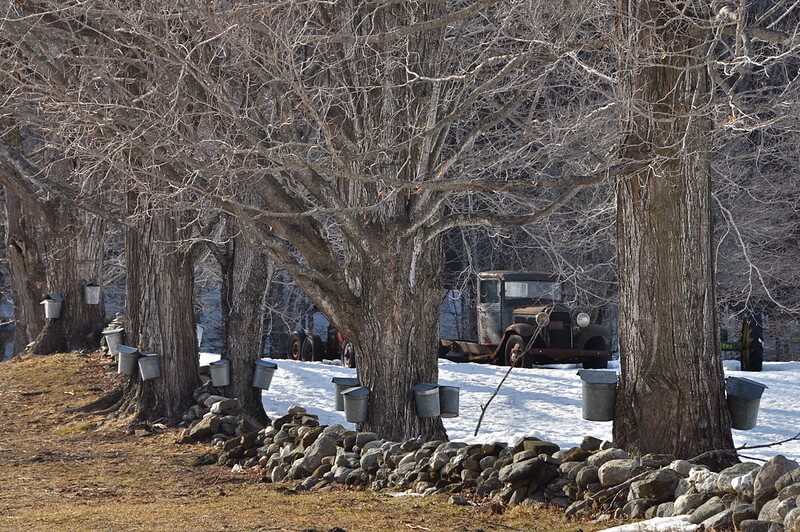
Also bearing thorns, black locust produces beautiful, edible spring flowers and hard, durable wood. It is not very tolerant of shade, so plan accordingly with your locust hedge placement.
Additionally, even though it is a native plant, it is considered invasive in some states so check before you plant. If you do decide to partner up with this useful tree, you can also benefit from the relatively unknown fact that it is a nitrogen fixer that will help improve your soil quality.
16. Hazelnut Hedge
Not thorny like Osage or black locust but able to produce an abundance of wood and delicious nuts, hazelnuts are a useful tree to consider for hedge laying. You can even choose to coppice some of your hazelnut trees to provide ample material for a wattle fence elsewhere, adding to the value of every hazelnut you put in the ground.
You may be able to find saplings at a reasonable price from your local department of conservation. In our state, hazelnuts are less than a dollar per sapling as long as you place your seasonal order in a timely fashion.
What cheap fence ideas have you used on your land? Do you swear by one type, or make a patchwork of different methods across your property? What suggestions have I missed? Let me know in the comments below!
How To Design A Nice Garden With Ugly Fence
Source: https://insteading.com/blog/cheap-fence-ideas/
Posted by: hornupout1979.blogspot.com

0 Response to "How To Design A Nice Garden With Ugly Fence"
Post a Comment